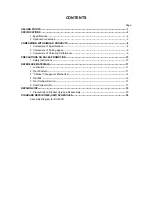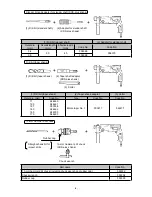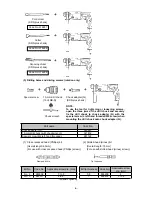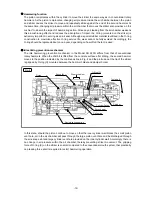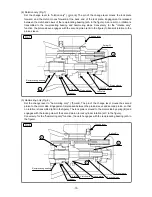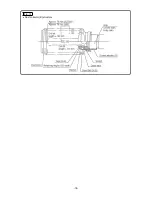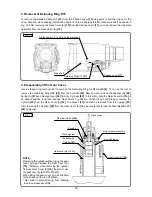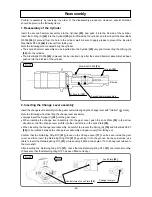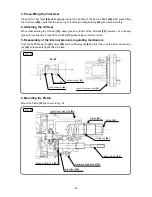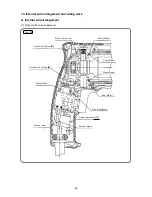
-12-
Fig. 4
Hammering function
The piston reciprocates within the cylinder to move the striker the same way as in conventional rotary
hammers. As the piston reciprocates, changing air pressure inside the air chamber between the piston
and striker causes the striker to move and repeatedly strike against the end of the second hammer. At
the same time, changing air pressure within the air chamber that moves the striker also provides an "air
cushion" to absorb the impact of hammering action. Since any air leaking from the air chamber weakens
this air-cushioning effect and reduces the absorption of impact, the O-ring (mounted on the striker) is
extremely important in serving as an air seal. Although a special rubber material is utilized in the O-ring
construction to maximize effective O-ring service life, wear cannot be fully avoided. Accordingly, the
O-ring should be replaced about once a year, depending on how often the tool is used.
Idle striking prevention mechanism
The idle hammering prevention mechanism in the Model DH 22PH differs from that of conventional
rotary hammers. When the drill bit is lifted from the concrete surface after drilling, the second hammer
moves to the position indicated by the continuous line in Fig. 4 and the protrusion at the tip of the striker
is gripped by O-ring (C) mounted between the hammer holder and damper holder.
In this state, should the piston continue to move so that the inner cylinder wall blocks the small piston
vent hole, air in the air chamber will pass through the large piston vent hole and be discharged through
the air-escape slot and large cylinder vent hole provided on the inner cylinder wall. Accordingly, there is
no change in air pressure within the air chamber, thereby preventing striker movement. The gripping
force of O-ring (C) on the striker is so small compared to the conventional mouth system, that practically
no pressing force at all is required to restart hammering operation.
Tool shaft
Cylinder
Reciprocating bearing
Cylinder flange
Second gear
Coil spring
Striker
Spring (A)
Piston
Slip mechanism
O-Ring (C)
Clutch



